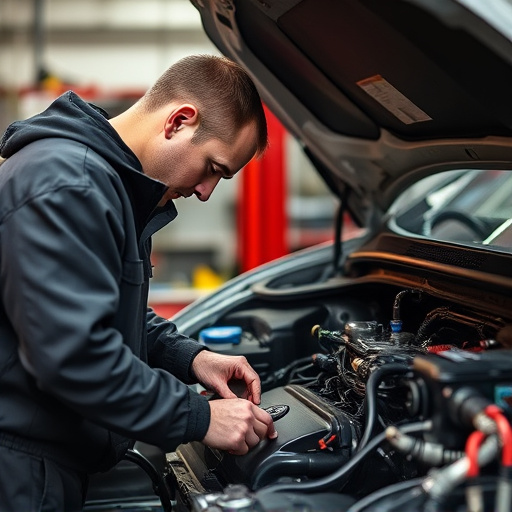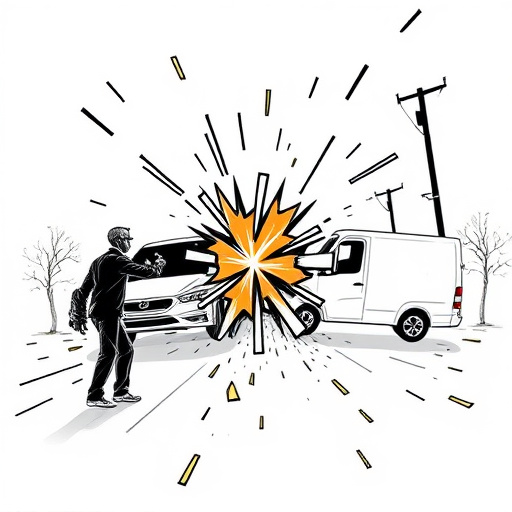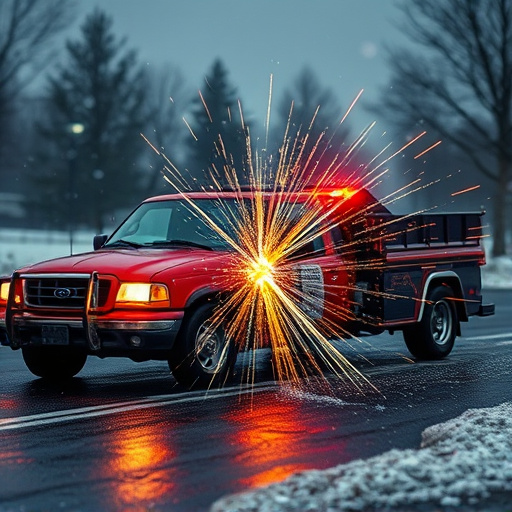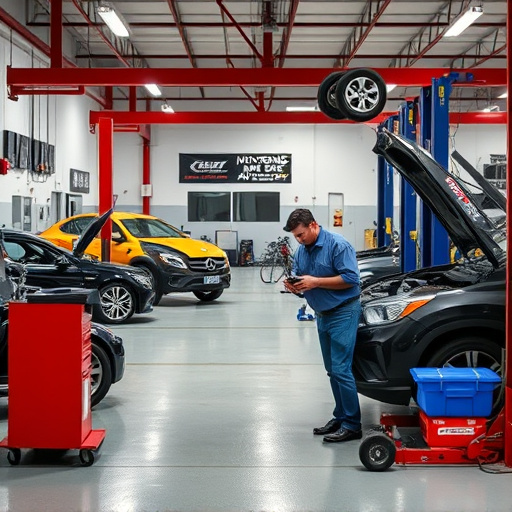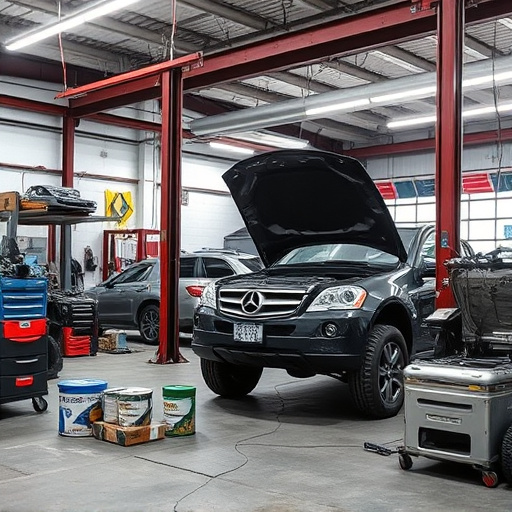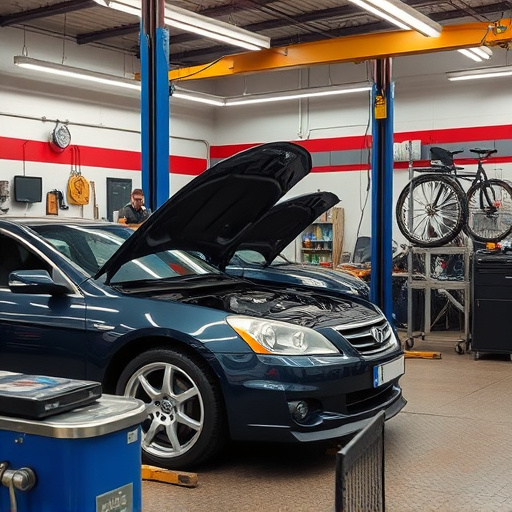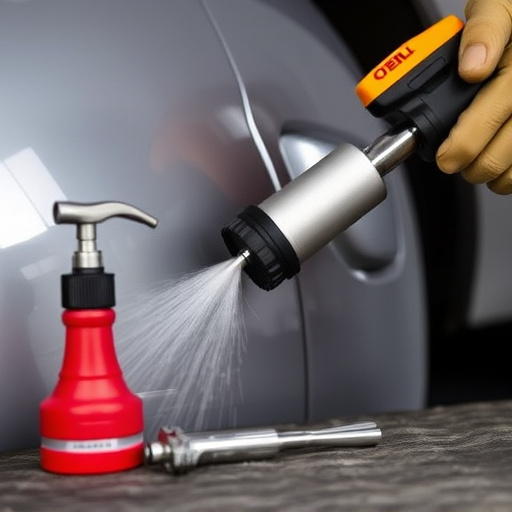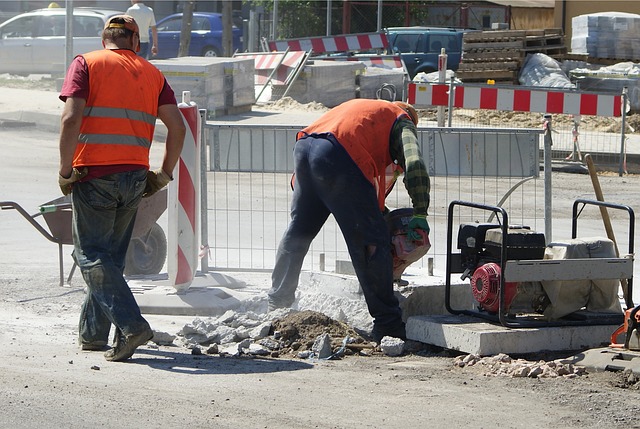Axle repair after an accident is a critical step for ensuring the safety and performance of heavy-duty vehicles. Skilled technicians use advanced diagnostic tools to identify common issues like bent axles, compromised bearings, or worn gear teeth. Repairs involve meticulous processes such as part removal, installation of new components, alignment to factory specifications, and secure fastening. Post-repair testing ensures structural integrity and smooth operation before returning the vehicle to service. Regular maintenance, including inspections and lubricating parts, is vital for preventing further damage and ensuring long-term reliability. Utilizing body shop services for repairs and restoration helps restore both structural integrity and aesthetic appeal.
After a collision, heavy-duty vehicle owners often face the challenge of damaged axles. This article provides comprehensive guidance on managing and repairing these critical components. We’ll delve into understanding common types of axle damage from accidents, exploring the step-by-step process for repairs tailored to heavy-duty vehicles. Additionally, we offer valuable tips for post-accident maintenance and prevention strategies to ensure your fleet’s safety and operational efficiency. Discover how prompt action and expert care can restore your vehicles to their full capabilities, minimizing downtime and maximizing performance.
- Understanding Axle Damage After an Accident
- The Process of Axle Repair for Heavy-Duty Vehicles
- Tips for Effective Post-Accident Maintenance and Prevention
Understanding Axle Damage After an Accident
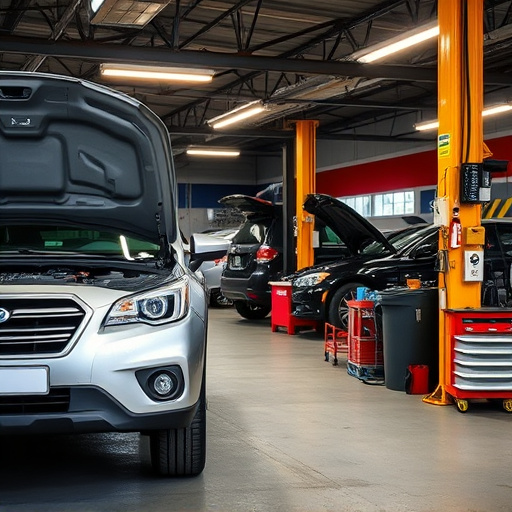
After a heavy-duty vehicle is involved in an accident, understanding the extent of axle damage is crucial for efficient repairs. Axles are critical components that support the weight of the vehicle and facilitate its movement, so any damage can significantly impact the overall performance and safety of the machine. Common types of axle damage include bent or broken axles, damaged bearings, and worn-out gear teeth. These issues may arise from various accident scenarios, such as rear-end collisions, rollovers, or hitting curbs and speed bumps.
Recognizing the specific nature of the damage is essential for effective repairs. A reputable body shop with specialized auto body repair expertise will assess the situation using advanced diagnostic tools to pinpoint problem areas accurately. They offer a range of body shop services tailored to heavy-duty vehicles, ensuring that any axle repair after an accident is done meticulously and safely, restoring your vehicle’s functionality and roadworthiness.
The Process of Axle Repair for Heavy-Duty Vehicles
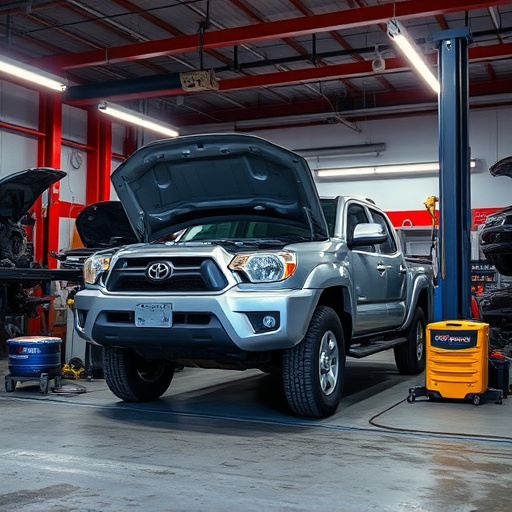
After a heavy-duty vehicle is involved in an accident, proper axle repair after accident becomes crucial for ensuring safety and optimal performance. The process involves several meticulous steps to address potential damage to the axle assembly, including the hub, bearing, and shaft. Skilled technicians begin by thoroughly inspecting the axle for any signs of damage, such as dents, cracks, or misalignments. Depending on the severity, components may need replacement rather than repair.
Once the extent of the damage is assessed, auto body repairs can commence. This might include removing dented or damaged parts and installing new ones, aligning the axle to factory specifications, and ensuring all components are securely fastened. Following these meticulous repairs, vehicle body repair testing is conducted to verify structural integrity and smooth operation before the vehicle is returned to service. Axle repair after accident plays a vital role in preserving the heavy-duty vehicle’s functionality, safety, and longevity on the road.
Tips for Effective Post-Accident Maintenance and Prevention

Post-accident maintenance is a crucial step in ensuring safe and reliable operation of heavy-duty vehicles. The first tip is to perform a thorough inspection, including checking for any signs of damage or wear on the axle repair after accident. This involves visually examining the axles, wheels, and suspension components for cracks, dents, or misalignments. Early detection of issues can prevent further damage and costly repairs.
Regular maintenance routines, such as lubricating moving parts, replacing worn-out components, and checking tire pressure, are essential to prevent future accidents. Additionally, utilizing body shop services for repairs, including automotive restoration and car paint repair, can help restore the vehicle’s structural integrity and aesthetic appeal. Prioritizing these preventive measures can significantly contribute to the longevity of heavy-duty vehicles and reduce the risk of post-accident damage.
In the wake of an accident, proper axle repair for heavy-duty vehicles is paramount to ensuring safety and minimizing downtime. By understanding potential damage and implementing effective maintenance practices, fleet managers can streamline the post-accident process. The meticulous repair process, detailed in this article, serves as a guide for restoring these critical components to their optimal state. Remember that proactive measures, including regular checks and timely repairs, are key to preventing future axle damage, keeping your vehicles on the road, and enhancing overall operational efficiency.


